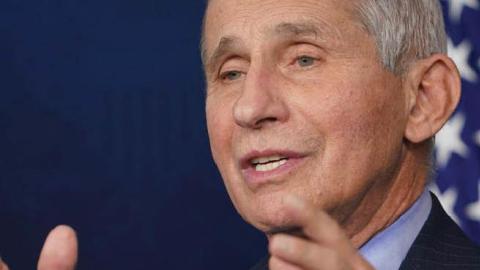Just in time for everybody’s top New Year’s resolution, the U.S. government’s 2020-2025 Dietary Guidelines are out. And like guidelines before it — every five years since 1980 — it is a long shot that they will reverse America’s ever-rising obesity rates. Compelling consumers to understand micrograms, trans fats and other nutrients is not enough. The guidelines need a makeover focused on portion control to make them usable, a charismatic spokesperson to bring them alive, and some assistance from the food industry to give the guidelines some pizazz and marketing.
While nutrition guidance on sugar, salt and saturated fat is valuable, it has not been able to reverse the stubborn rise of obesity rates. Since the government issued its first Dietary Guidelines in 1980, obesity, a diet-related condition, has climbed to become America’s No. 1 health issue. In fact, since the first guidelines were published, obesity rates have nearly tripled, from 15% in 1980 to 42.4% today. Americans now consume more than 400 calories per day than they did in 1970. The Healthy Eating Index (HEI), which rates how well American eating habits align with the Dietary Guidelines, averages a score of 59 out of 100, another dismal statistic. If these were report cards, more remedial work would be required.
The Dietary Guidelines are certainly up against some strong headwinds with an overabundance of food available to an overconsuming public. Nevertheless, why haven’t the guidelines been effective in changing consumer eating patterns? I can think of three reasons:
* Awareness and use are low. Fewer than one in four U.S. adults follow the “MyPlate” dietary guidelines. Compounding this, consumer segmentation studies conducted by Natural Marketing Institute show that one-third of Americans express little interest in nutrition. Many still don’t even read package labels.
* They are difficult to follow. The U.S. government experiment to convert to the metric system in the 1970s failed to be adopted by Americans. Yet grams are still used to denote amounts in foods, which are Greek to people who think in terms of ounces or cups.
* They apply a one-size-fits-all approach. The guidelines assume that all of us learn the same way, and that once we gain nutritional knowledge we will change our eating behaviors accordingly. This works fine for the small percentage of obsessive “my body is a temple” types. But don't hold your breath for the rest of us.
Notably missing is guidance on how to manage portions and help to stick with it. Portion sizes have exploded, especially in restaurants, having undergone a fourfold increase since the 1950s, when the average 3.9-ounce burger was the size of what’s become a slider today. The standard soda size was once seven ounces; now one can order the quart-sized 400-calorie Sonic Route 44 Barq's Root Beer.
In addition to making portions front-and-center, the government must “push” the guidelines out to consumers in a memorable way, instead of just publishing them and expecting anybody other than nutritionists and school lunch programs to consult them.
This can be accomplished by tapping a respected scientist, someone charismatic and telegenic, as a spokesperson for its public health effort. This person can do for the guidelines and nutrition awareness what Anthony Fauci did for COVID awareness. He or she could be the go-to source for journalists and others, and someone whom the public deems trustworthy.
But government can’t do this alone. Food corporations must help beat the drum too and they have the budgets to do so. In 2019, food, beverage and restaurant companies spent $12.9 billion in measured media. Tapping into these dollars, even just a small percentage, could generate serious awareness on how to adopt healthier eating habits along with the need to eat smaller portions.
The packaged foods and restaurant sectors should be willing to step up for such an initiative for three reasons:
* Consumers want companies to be more socially responsible. Consumers ranked food and grocery as the top sectors which should commit to corporate social responsibility. Eighty-six percent of consumers believe that companies should take a stand for social issues.
* Shoppers are demanding healthier foods and more balanced portions. Fifty-nine percent of consumers expect to continue shopping more health-consciously post pandemic. Even among restaurant patrons, 63% claim they look for healthy items and 55% say that they would prefer smaller portions.
* Getting ahead of potential regulations. Policy makers are increasingly aware of how obesity has made problems like Covid-19 worse and are looking at the food industry as a culprit. Berkeley, California’s “junk food” ban at retail checkout is the latest salvo against the industry. Additionally, the new Democrat-controlled Congress is likely to be more sympathetic to regulation.
Some industry groups are beginning to tackle the portions dilemma. They include the Always a Treat Initiative, where leading confectionery companies pledged to sell more than half of their instant consumable items in packages with 200 calories or less. There is also Georgetown University’s Portion Balance Coalition, a forum of companies such as Unilever, Nestle, PepsiCo and chocolate maker Ferrero that are committing to sell smaller sizes and educate consumers on portions.
But more companies need to get on board. Especially vulnerable are restaurants and makers of sweet baked goods, packaged pastries, snacks and sugar sweetened beverages which are purchased at disproportionately high levels by people with obesity.
Here are three things food companies and restaurant chains should do:
Follow the leaders. The pathway to address portions has been laid out by the confectionery companies with the Always a Treat Initiative and the Portion Balance Coalition. Mimicking their actions would be a good start.
Commit to ‘tag’ their ads with portion messages. Working with public health experts, food, beverage and restaurant companies can incorporate portion message “tags” into their existing ads. By setting aside 10% of their budgets (at negligible incremental cost), this would go a long way to educating consumers. Using a credible Dr. Fauci-type spokesperson would augment ad effectiveness.
Track the portions they sell. While several food and beverage companies continue to take sugar, salt and saturated fats out of their products, those good efforts have yet to yield meaningful results on the obesity front. Companies need to cut portion sizes, too, and track their progress.
Let’s face it: Solving America’s stubborn obesity problem will require a concerted effort, involving both the public health community and the private sector. Covid-19 has demonstrated that those with obesity suffer higher rates of hospitalization and death. Getting the portion balance message out by piggy-backing big food ad budgets can help make a dent. And putting out guidelines that consumers can easily follow would be the next best thing.
Read in Forbes




















